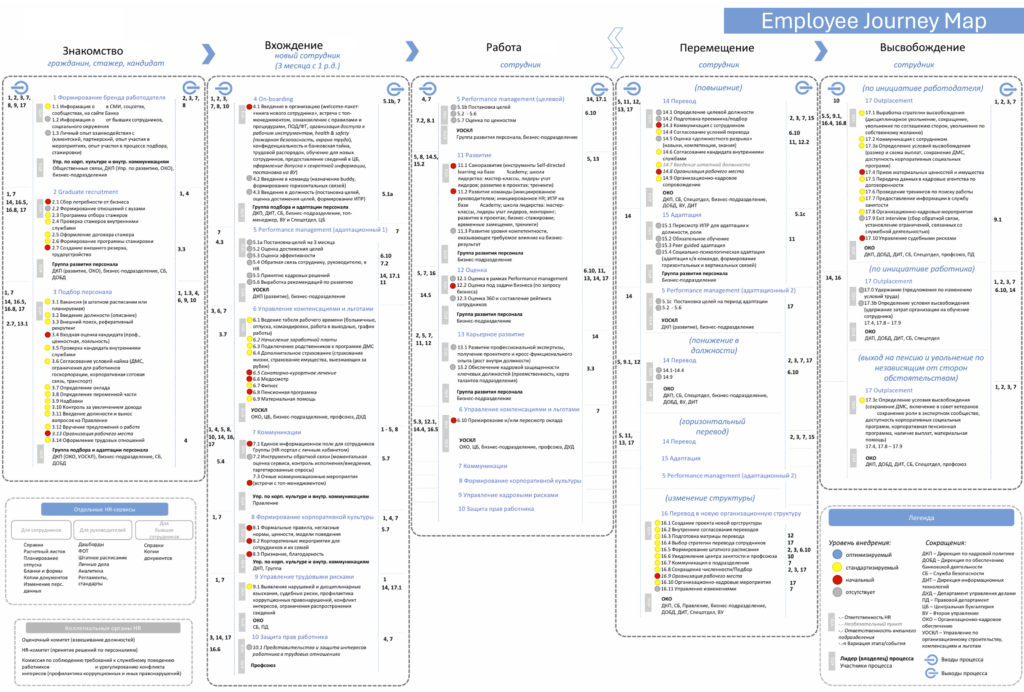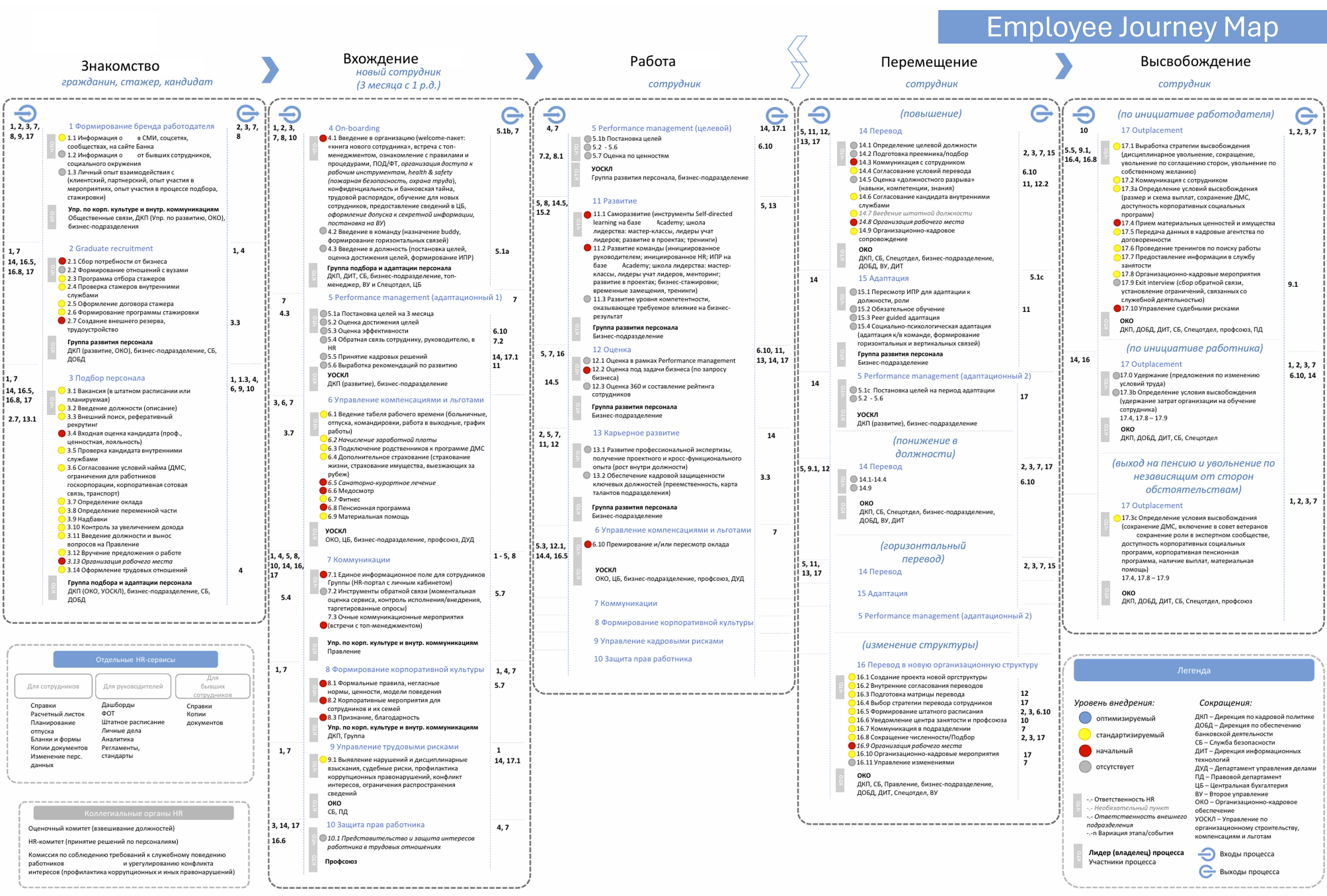Project Snapshot
Timeline: Less than 6 months
Organization: a 17,000-employee legacy corporation
Key Techniques & Tools:
- Research: Stakeholder Interviews, Document Analysis, Benchmarking, Process Diagnostics
- Design: Employee Journey Mapping (EJM), Service Blueprints, BPMN Diagrams, Co-Creation Workshops
- Management: Agile Iteration Planning, Change Management, Regulatory Document Development
- Automation Preparation:
- Development of detailed project documentation for service automation
- Business and functional requirements gathering
- Vendor selection and competitive procurement processes
Unique Aspects:
- Played a key role in the development and formal presentation of the company’s HR strategy as part of a larger organizational reform
- First use of Employee Journey Maps for HR modernization in Russia
- Co-creation workshops with service consumers and owners
- Data-driven transformation aligned with business and employee needs
Key Deliverables:
Introduced human-centered design principles to a state-owned organization
Redesigned 31 services
Comprehensive documentation for automation readiness
Conducted competitive vendor procurement for automation solutions
In 2016, I was invited to contribute to the structural reform of a Russian state-owned financial corporation with over a century of history and 17,000 employees. This project stood out for two reasons: it was my first experience working with a state-owned corporation and my first engagement exclusively focused on internal services.
The initiative was part of a broader organizational reform launched under a newly appointed chairman, who aimed to modernize the company through digitalization and process reengineering. My specific role was to lead the redesign of the bank’s HR services, which were critical to achieving these goals.
Strategic Mission: From Legacy to Modernization
Initial research revealed that the organization’s internal services were 15–20 years behind industry standards and operated like a relic of the Soviet-era bureaucracy. The goal was clear: to transform these outdated HR processes into a modern, employee-centric ecosystem while preparing them for digital automation.
To achieve this, the project followed a structured, data-driven methodology:
- Analyzing Current State: Review of existing documentation to understand legacy processes.
- Stakeholder Interviews: Conducting interviews with key service consumers to identify pain points and barriers.
- Benchmarking Best Practices: Comparing findings with global and industry-leading HR solutions.
- Collaborative Design: Facilitating workshops to co-create future service models with both service owners and consumers.
- Formalizing Target Models: Using Service Blueprints and BPMN diagrams to document redesigned processes.
- Stakeholder Presentation: Aligning and securing approval for the proposed service models.
- Policy Development: Preparing regulatory documents to govern the reformed services.
- Automation Readiness: Defining business and functional requirements for digital tools.
- Vendor Selection: Evaluating automation solutions with a clear focus:
- Unique services providing competitive advantages required customizable tools.
- Historically complex but non-strategic services were simplified and automated using standard solutions.
Challenges and Solutions
The project’s complexity lay in balancing regulatory constraints with modern design principles while fostering a culture of collaboration in a traditionally hierarchical organization.
- User-Centric Approach:
Unlike typical reengineering efforts, this transformation relied heavily on feedback from key service consumers rather than just service owners or external consultants. - Co-Creation:
Service owners and consumers worked together during design workshops, ensuring a shared sense of ownership and increasing the likelihood of adoption. Open dialogues helped participants accept unavoidable constraints, fostering trust and collaboration. - Innovative Tools:
For the first time in Russia, an Employee Journey Map was used as the central tool for redesigning internal services. This map served as a dashboard for prioritizing modernization efforts and tracking progress, placing employee experience at the heart of the transformation.
Outcomes and Legacy
In less than six months, we:
- Documented and restructured 17 primary and 14 auxiliary HR services.
- Prepared these services for automation through detailed process mapping and requirement definitions.
- Introduced a culture of dialogue and co-creation, paving the way for sustainable changes in how internal services were managed.
The project’s emphasis on human-centered design set a new benchmark for HR transformations in Russian state corporations. By focusing on employee experience, we not only modernized processes but also demonstrated how internal service design can drive organizational change.


